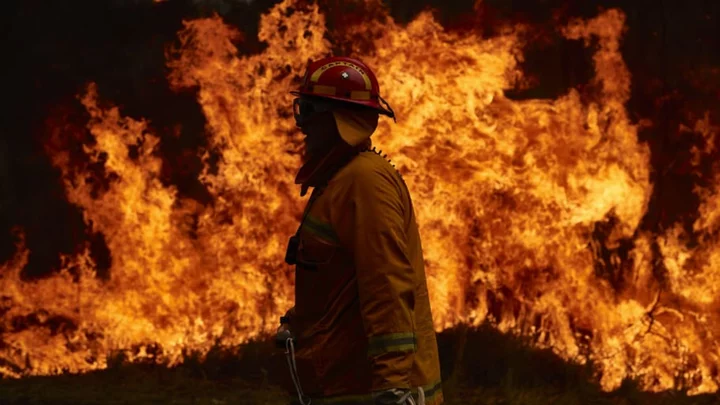Most Americans know how to stop, drop, and roll. Some even know how to employ a fire suppression blanket and how to properly operate a fire extinguisher. But for the vast majority of people, fire is something you brag about being able to make out of two sticks, or something you cook dinner on top of, or just something you sprint away from—certainly not something you want to have to fight to put out. The people who do run toward an unexpected blaze have been well trained in strategies that can suppress the flames of a wildfire. Below are 10 of the techniques firefighters use to put fires out quickly, completely, and safely.
1. A Control Line
One of the most important components of wildfire suppression, control lines are simply the boundaries—natural or humanmade—that firefighters employ to control how and where a fire spreads. A rocky ridge or river can serve as a natural control line, or firefighters can establish an artificial one by, for example, clearing out an extended line of brush. Within this overarching definition, a fire line is when the barrier is scraped down “to mineral soil,” a scratch line is a preliminary line built in a hurry, and a wet line is when the area has had flame retardant or water applied. And when you hear on the news that a fire is “X percent contained,” this is generally what they’re talking about—that some percentage of the fire’s perimeter has a control line. But because fires can sometimes jump the barrier, even a 100 percent contained fire can start up again.
2. A Burnout
When establishing control lines, digging a small ditch and pulling up some plants isn’t always enough. To create a sturdy, fuel-free barrier, firefighters may use small torches to burn the brush just inside a control line. A burnout is one of several ways to bolster a control line and further prevent a blaze from escaping the established boundaries.
3. A Backburn
A backburn is similar to a burnout, but requires a slightly more sophisticated technique. Once a control line is established, firefighters may set a controlled blaze downwind of the main fire, just on the inside of the control line; they then push the new blaze back toward the main fire, burning up all the fuel that lies between the fire and the control line.
4. Flanking
For a wildfire small enough to be snuffed out using a direct attack, firefighters may begin their assault on the blaze from behind. Starting from already burned earth, the firefighters will typically work their way around the edge of the fire to spray the flames as they make their way around the entire perimeter of the blaze.
5. Hot Spotting
Hot spotting is the term used to describe the extra attention given to the most active and dangerous portions of a wildfire. The crews fighting the fire size up the parts of the blaze most likely to spread and try to devise the best strategy for keeping these areas in check. Hot spotting may also involve diverting extra humanpower to the task of stamping out embers and spot fires that blow or erupt from the hottest part of the inferno.
6. Knocking Down
Whereas hot spotting refers to the assessment of a fire’s condition, knocking down is all about action. The knock down strategy is employed when firefighters decide that a certain hotspot needs to be suppressed immediately. To diminish the section of a fire deemed to have grown too hot, too active, or too large, fighters directly apply some combination of dirt, water, or retardant to that section.
7. Cold Trailing
While a fire is being attacked from the front or side, other firefighters may be involved in cold trailing, the task of combing through already scorched ground in the wake of a moving wildfire. The point is to make sure no hot or glowing embers remain, since leftover coals can be blown around and flame up again.
8. Aerial Attack
If significant exposed water sources are nearby, planes and helicopters can scoop up buckets of water and carry them to be dropped atop the inferno. The water is often mixed with a foam retardant before being dropped [PDF]. The foamed water acts as a more effective barrier to the spread of fire and also insulates fuel that has not yet burned.
9. Fireline Explosives
When setting control lines or firelines, firefighters may even use explosives to break up dense brush and fallen trees. Explosives can also be used to fell trees whose spread might help a fire jump across a control line. During a large or fast-moving fire, explosives are employed mainly for efficiency purposes, as they can save precious time when crews need to contain a fire quickly.
10. A Mop-Up
It’s called a mop-up when firefighters go back and clean up along a completed control line. Mop-up consists of dousing any embers and spot fires that have made their way across control lines. It also involves protecting still-vulnerable fuels using a burnout (if they’re permanently situated) or by simply moving them.
This story originally ran in 2014; it has been updated for 2023.
This article was originally published on www.mentalfloss.com as 10 Strategies Firefighters Use to Fight Wildfires.

